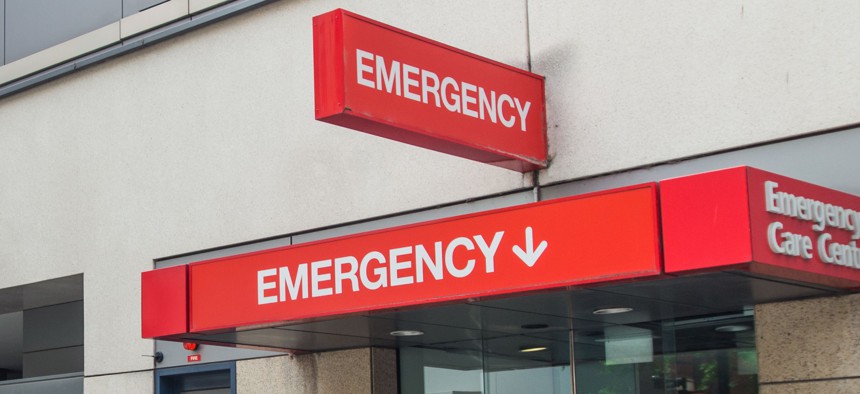Redefining the First Responder: Reducing Readmission with Proactive Paramedicine

Shutterstock
In a guest article, the fire and emergency services chief in Fishers, Ind., discusses how his department is “at the crossroads of public safety, public health and public service.”
FISHERS, Ind. — Improvements in fire safety have caused a significant decline in the number of fires in the United States, making the job description for the modern firefighter much different than it was 30 years ago. According to the National Fire Protection Association, structural fires declined 54 percent from 1980 to 2013.
As a fast-growing suburb, north of Indianapolis, Fishers firefighters have adapted to address the variety of situations to which we respond. In 2012, the Fishers Fire Department officially changed our name to the Fishers Fire & Emergency Services Department (FFES). As the first responders for water rescues, hazardous materials, gas leaks and medical emergencies, the new moniker encompasses our evolving function in serving the community.
We are now at the crossroads of public safety, public health and public service.
Under the Affordable Care Act (ACA), hospitals do not receive a reimbursement if a Medicare patient is readmitted to the institution within 30 days of discharge. Since ACA was enacted in 2012, U.S. hospitals have suffered a collective $1 billion in penalties for readmissions. At the community level, higher readmission rates mean people needlessly suffering in our city.
Because FFES is the first responder to such medical calls, we decided to take a proactive step to decrease readmission rates and benefit the wellbeing of our residents. Since paramedicine is the standard of care in Fishers, our department has implemented a program, named We Care, aimed at reducing readmission rates through hospital discharge referrals, education and home visits.
Hospitality Instead of Hospitalization
The Hospital Discharging Referral Program is one pillar of We Care. Paramedics will visit high-risk patients in their home 24-72 hours and as needed after they have been discharged from the hospital. Both the patient and paramedic (firefighter) will work together to resolve any issues that present themselves during the visit. Often, this includes helping a patient manage medications and doctor’s appointments. The paramedic will then serve as a mediator between the patient and the hospital. While these tasks seem simple, they can easily overwhelm a chronically ill patient. We’ve received many notes of appreciation from patients we’ve serviced who are now happy and healthy.
Knowledge Is Power
Proactive education also plays an important role in the successful rehabilitation of a patient following discharge. We found that undiagnosed hypertension and diabetes cause emergencies in our community and enacted the education piece of the We Care program to reduce such calls. Residents now have the opportunity to stop in at any Fishers Fire station to acquire a free blood pressure check and a tracking card to share with their physician. Firefighter paramedics can then provide education and awareness to citizens who may not know all the issues that could come with undiagnosed blood pressure-related health problems.
Home Is Where the Heart Is
When most people picture a paramedic entering a home, flashing lights, sirens and an urgent responder typically come to mind. In our efforts to provide proactive care, FFES has begun visiting homes in a relaxed, non urgent manner to stop emergencies before they happen.
FFES responds to 3,500 emergency medical calls per year, but we hope to reduce this number through several proactive initiatives.
Second only to motor vehicle accidents, in-home falls are a major cause for emergency medical service calls. For elderly patients falls are a serious risk—63 percent of those injured are more than 60 years of age. Of those, 81 percent are hospitalized as the result of a fall. To reduce fall-related injuries, paramedics perform in-home safety audits and medication reconciliations.
Yet when EMS incidents do occur, firefighters oftentimes observe conditions that could benefit from social service assistance. In the last five years, Fishers has noted that more and more of its residents are in dire need of these services. Through several key partnerships, we’ve created an information network to provide awareness of social services available to these homes. The EMS division then reaches out to those who have requested information on the services available for their current needs. After a phone interview and home visit, we offer recommendations for the what level of assistance is required. The needed resources can then be coordinated between the program and individual.
By the Numbers
Since the We Care program launched in late 2014, readmission rates have dropped from 22 percent to 7 percent. This has led to lower healthcare costs and a healthier community. It is our hope that cities nationwide will adopt similar programs to proactively save lives and impact community wellbeing.
Steven Orusa has served as the Fire Chief for the Fishers Fire and Emergency Services Department since 2011.
NEXT STORY: Even Healthy-Looking Suburbs Are Dying From Drugs





